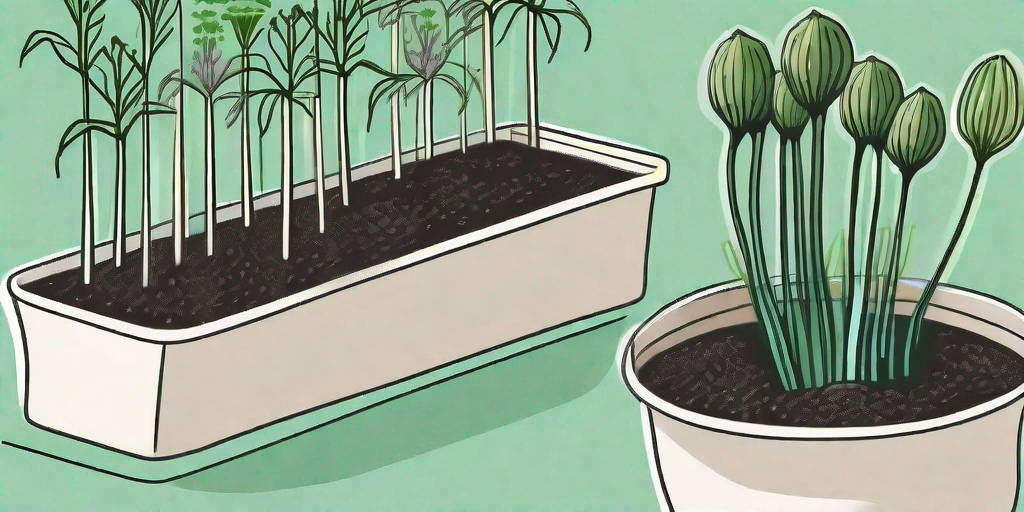
Welcome to the world of home gardening, where the fruits (or in this case, vegetables) of your labor are as delicious as they are rewarding. Today, we're going to delve into the art of growing scallions at home. Yes, those slender, green, onion-like veggies that add a punch of flavor to your salads, stir-fries, and soups. Let's embark on this green-thumb journey together, shall we?
Why Grow Scallions at Home?
Before we get our hands dirty, you might be wondering why you should bother growing scallions at home. Well, aside from the fact that they're ridiculously easy to grow, they're also incredibly versatile in the kitchen. Plus, they're packed with essential vitamins and minerals, making them a healthy addition to your meals.
Moreover, growing your own scallions means you'll always have a fresh supply on hand. No more last-minute trips to the grocery store when you realize you're out of scallions for your favorite recipe. And let's not forget the satisfaction of watching something grow from a tiny seed into a full-fledged, edible plant. It's the circle of life, right in your kitchen!
Getting Started: What You'll Need
Now that we've established why home-grown scallions are the bee's knees, let's talk about what you'll need to get started. Don't worry, the list isn't long, and these items are easy to find.
Firstly, you'll need scallion seeds, which can be purchased online or at your local garden center. Next, you'll need a container to grow them in. This could be a pot, a planter, or even a window box. Just make sure it has good drainage. You'll also need potting soil, and optionally, some compost or fertilizer to give your scallions a nutrient boost.
Potting Soil vs. Garden Soil
When it comes to choosing soil, potting soil is your best bet. Unlike garden soil, potting soil is specially designed for container plants. It's lighter and fluffier, allowing for better water drainage and root growth. Plus, it's usually enriched with nutrients that your scallions will love.
Garden soil, on the other hand, can be too heavy for container plants, leading to poor drainage and root rot. So, for the sake of your soon-to-be scallions, stick with potting soil.
Planting Your Scallion Seeds
Now that we've gathered our supplies, it's time to get planting. This is where the magic happens, folks.
Start by filling your container with potting soil, leaving about an inch of space at the top. Then, sprinkle your scallion seeds evenly over the soil. Cover the seeds with a thin layer of soil, and water thoroughly.
Place your container in a sunny spot, and keep the soil moist (but not soggy) as your scallions begin to grow. In a few weeks, you should see little green shoots poking out of the soil. Congratulations, you're officially a scallion farmer!
How to Water Your Scallions
Watering is crucial to your scallions' success, but it's also a bit of a Goldilocks situation. Too much water can lead to root rot, while too little can leave your scallions parched and wilting.
The key is to keep the soil consistently moist. This usually means watering once a day, but it can vary depending on the temperature and humidity. If the top inch of soil feels dry, it's time to water. If it feels soggy, hold off for a day or two.
Harvesting and Using Your Scallions
After about 8-10 weeks, your scallions should be ready to harvest. They should be about 12 inches tall, with white bulbs at the base. To harvest, simply pull the scallions out of the soil, wash them thoroughly, and they're ready to use!
Scallions can be used in a variety of dishes, from salads and stir-fries to soups and sauces. They add a mild, onion-like flavor and a pop of green color. Plus, they're a great source of vitamins A and C, so you can feel good about adding them to your meals.
FAQs
Can I regrow scallions from the roots?
Absolutely! If you save the white root end of a scallion, you can regrow a new scallion in just a few weeks. Simply place the root end in a glass of water, change the water every few days, and watch as new green shoots emerge. It's like getting two scallions for the price of one!
Do scallions need a lot of sunlight?
Scallions do best in full sun, but they can tolerate partial shade. If you're growing them indoors, place them near a sunny window for best results.
Can I grow scallions in the winter?
Yes, you can! Scallions are hardy plants that can tolerate cooler temperatures. Just make sure to bring them indoors if the temperature drops below freezing.
Conclusion
And there you have it, folks. A comprehensive guide to growing scallions at home. With a bit of patience and care, you can enjoy fresh, home-grown scallions in just a few weeks. So why not give it a try? Your taste buds (and your wallet) will thank you.
Happy gardening!











